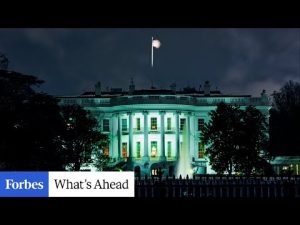**Gold Rush in the Modern World: What $4,000 an Ounce Really Means**
In the past few weeks, the price of gold has soared to over $4,000 an ounce, causing quite a stir in the financial world. While many people in the United States might not grasp the significance of this price hike, the international interest in gold—especially from Asia—is telling a different story. Wealthy households in China and India are ahead of the game, securing vast amounts of gold compared to American households. It’s like they’re prepping for a long winter, while the average American is still busy contemplating what color to paint their picket fence.
To provide some context, it’s estimated that Chinese and Indian families hold around 30,000 tons of gold collectively—far surpassing the mere 8,133 tons owned by the U.S. government. Now, does this mean Americans have formed a conspiracy against gold? Not quite. The fact is, only about 10 to 11% of U.S. households have any exposure to gold. That’s a number that just dances at the foot of sophistication compared to other nations. This suggests a lack of awareness about gold’s role as a financial safety net, while our fellow global citizens are filling their vaults with shiny yellow bars. Talk about a gold rush, right?
The reasons behind gold’s meteoric rise can be boiled down to two main factors that Wall Street has finally taken notice of: the debt debasement trade and a shifting global financial order. Simply put, the U.S. is in a fiscal pickle, with our debt-to-GDP ratio at alarming levels. While American households might not realize it, their hard-earned dollars are losing purchasing power at an unprecedented rate, thanks to rampant money printing over the years. This creates a sense of instability that pushes smart investors to seek safe havens like gold.
What makes this situation even more alarming is how asset classes compare when pegged against gold instead of dollars. Over recent years, the stock market has painted a misleading picture, showing dramatic increases in dollar terms. However, when these increases are measured in gold, one discovers a different reality. The NASDAQ has gained a respectable 236% in dollars, but only managed a paltry 4.7% increase when compared in gold terms. It’s like feeling rich while living in a cardboard box, right? Similarly, the S&P 500 may show a 133% rise in dollars, yet it has dropped by 27.6% when viewed through the lens of gold. Homes? They may be expensive in dollars, but when compared to gold, they’re down 50%. Father Time keeps laughing while dollars grow increasingly untrustworthy.
The silver lining (pun intended) lies in the fact that younger generations—Millennials, especially—are beginning to wise up to the system. Having witnessed the Great Recession, they’ve developed a sense of skepticism toward traditional investment norms. Instead of blindly trusting the system, they’re asking questions. Could it be that previous generations didn’t just have bad timing when investing in stocks? Perhaps, instead, they were taking a gamble on a system that may not have their best interests at heart. More millennials are turning to gold, seeking stability rather than chancing it on ever-inflating dollars.
Historically, advisors used to suggest that a portion of investment portfolios should be allocated to gold for safety. However, as the stock market flourished, that advice fell out of favor. Now, the pendulum seems to be swinging back, with big financial names advocating for larger gold allocations—some suggesting 10%-20% of portfolios should include gold. Notably, high-net-worth investors are reportedly holding an average of 21% in gold, signaling a serious shift in mindset among those who know wealth best. It might just be that gold isn’t old-fashioned; perhaps it’s timeless!
In conclusion, the surge in gold prices is more than just a number on a screen; it reflects a broader understanding of the complexities and instability of our economy. As savvy investors—both seasoned and new—begin to realize the true potential of gold, it may very well be time for Americans to look in our own backyards and assess what future security looks like. So, while people juggle their investments, perhaps it would be wise to dust off the old gold jewelry and take a closer look at what truly holds value in this ever-shifting market.







